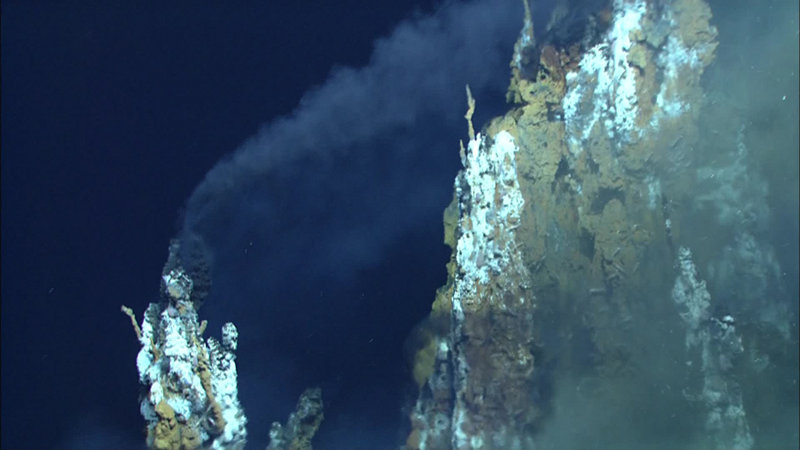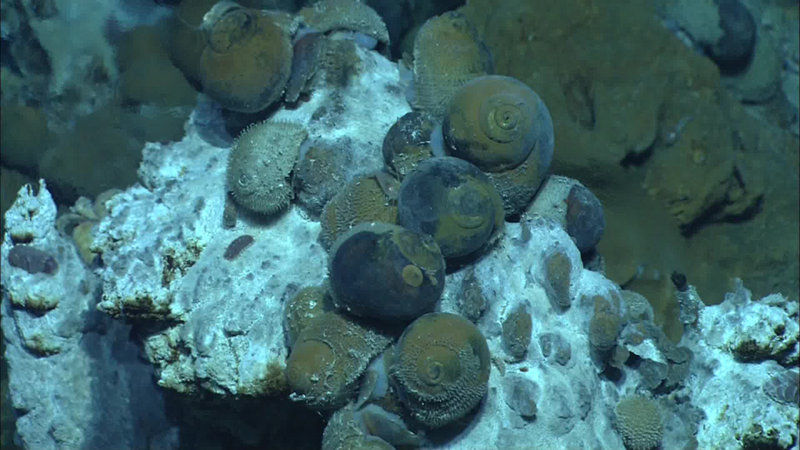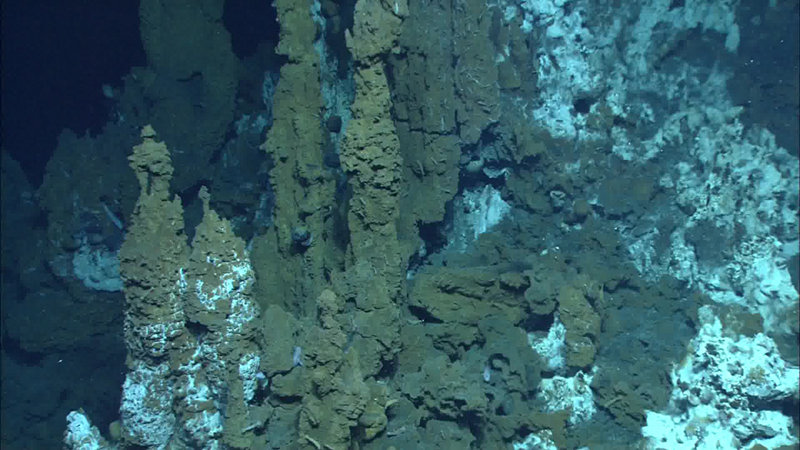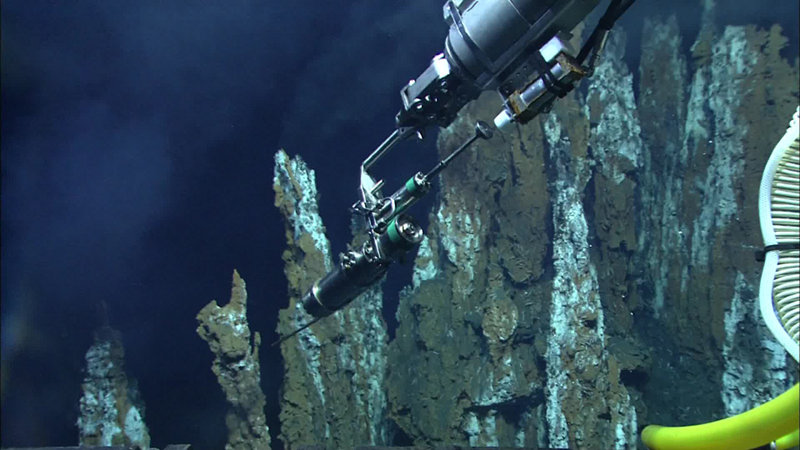
By Bill Chadwick, Research Professor - Oregon State University
September 18, 2012
After two days of high winds and seas that prevented us from making dives, the scientists on board were all anxious to get the Quest 4000 ROV back in the water. When the winds finally diminished enough, we made our next dive at Niua South volcano, the northern-most submarine volcano in the Tonga arc. Based on previous work in this area that found evidence for hydrothermal venting, we focused the dive on a large crater on the southern shoulder of the volcano at a depth of 1155 meters. Previously collected high-resolution bathymetry showed that there was a string of mounds crossing the crater floor that we suspected could be the location of hydrothermal chimneys. In addition, chemical analyses of water samples taken previously above the site indicated that the vents were probably high-temperature. We were particularly anxious to explore this new site because of its location on the arc front (volcanoes closest to the Tonga Trench) and compare it to our rear- and backarc samples, collect the vent fluids for the first time, and determine what organisms were living at the vents in order to continue to piece together the biogeography of the Northeast Lau Basin.

Black smoke from the top of a chimney is carried “downwind“ by the strong current in the vent field. Image courtesy of MARUM, University of Bremen and NOAA-Pacific Marine Environmental Laboratory. Download larger version (jpg, 385 KB).

A close-up view of the two species of snails found at the Niua South (Alviniconcha and Ifremieria). Image courtesy of MARUM, University of Bremen and NOAA-Pacific Marine Environmental Laboratory. Download larger version (jpg, 346 KB).
The crater at Niua South was about 200 meters across and about 30 meters deep. At the center was a large sulfide mound, about 20 meters high and 50 meters wide, representing deposits formed during many years of high-temperature hydrothermal venting. Most of the mound is now inactive, and formed of numerous collapsed dead chimneys, but at the top we found a spectacular black-smoker vent, consisting of a cluster of about 20 active chimneys that had all grown together, which we named Adelaide Spires. The ROV sampled vent fluids and gases coming out of the chimneys as well as a few pieces of the chimneys. Animals living at the vent included two species of shrimp, two species of snails, limpets, scaleworms, crabs, squat lobsters, eelpouts, and barnacles. We had discovered yet another spectacular oasis in the deep sea.

At the Adelaide Spires vent field 20 or more active chimneys are so close they have grown together. Image courtesy of MARUM, University of Bremen and NOAA-Pacific Marine Environmental Laboratory. Download larger version (jpg, 287 KB).

The Quest 4000 ROV prepares to use a “gastight“ vent fluid sampler. Image courtesy of MARUM, University of Bremen and NOAA-Pacific Marine Environmental Laboratory. Download larger version (jpg, 377 KB).
As we crossed rippled sands on the way into the crater, we noticed a persistent wave pattern consistent with a southwesterly-directed current. This same current was wafting an energetic and prolific plume of black particulate rich “smoke“ from the top-most orifice of the largest chimney. The smoke was spiraling out corkscrew-fashion and bending strongly over with the prevailing current sweeping the mound. The pilots of the ROV had difficulty maintaining station in the strong thermals rising around the chimney cluster, and settled for sampling one of the buttressing spires, in itself a prolific source of black smoke. The peak temperature measured was 315°C, consistent with the boiling temperature at that depth. The pilots persisted with delicate station holding to collect “gas-tight“ and “major“ water samples, and finally grabbed, with some difficulty because of their friable nature, samples of the chimneys themselves.